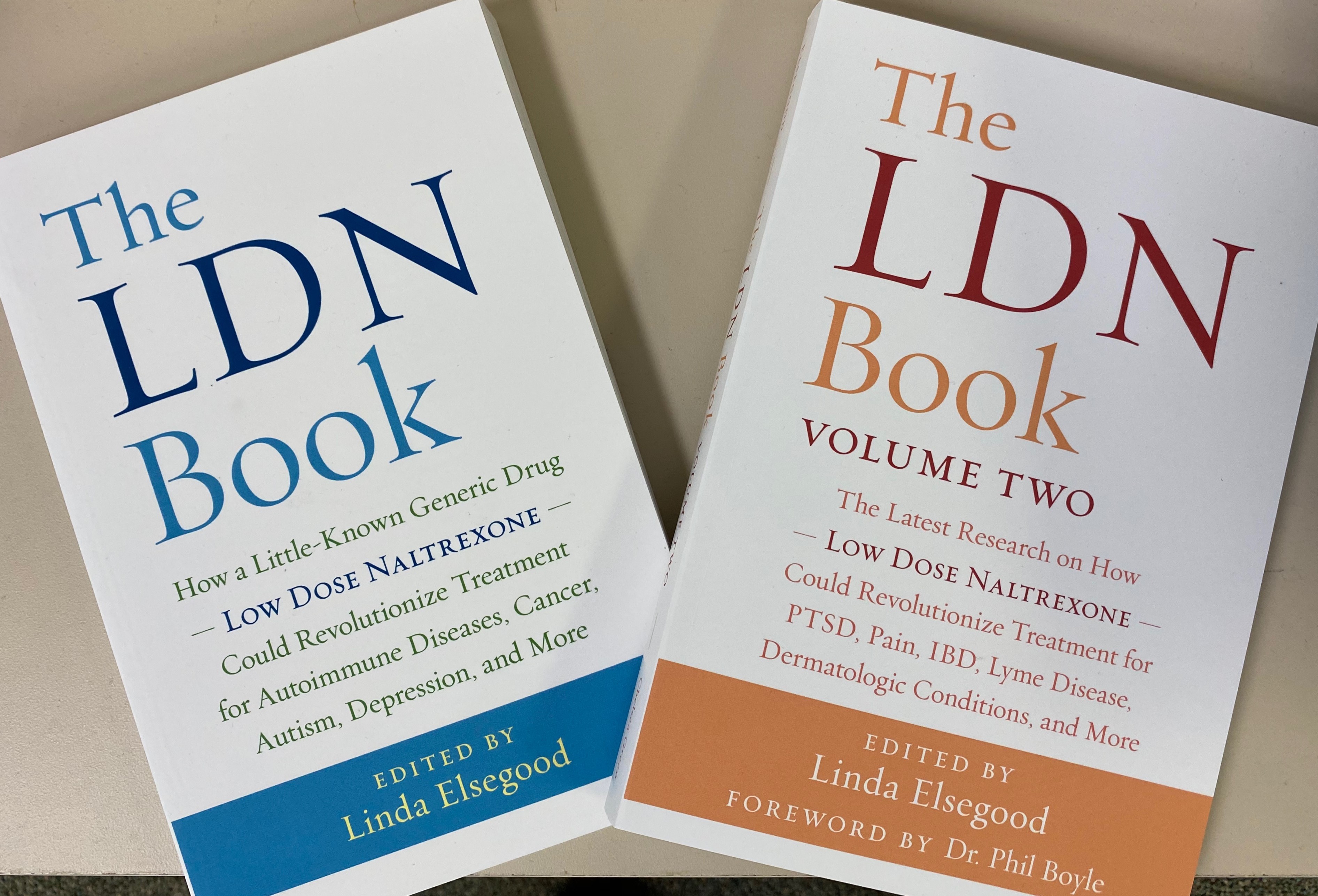What is Low Dose Naltrexone (LDN)?

Naltrexone belongs to a class of drugs known as opioid antagonists first introduced in 1984. Naltrexone blocks opiate drugs from binding to opioid receptors. Doctors began using much lower doses in the 1990s for purposes of normalizing the immune system and for inflammatory and neurological disorders. We now use as low dose naltrexone (LDN). Naltrexone is not a controlled substance, nor does it have any abuse potential. It generally is not used when someone is on opiate therapy. Call our pharmacist to discuss options.
Which patients may benefit from LDN therapy?
- Chronic pain
- Hashimoto’s
- Parkinson’s disease
- Arthritis
- Graves’ disease
- Ulcerative colitis
- Crohn’s Disease
- Psoriasis
- Eczema
- Fibromyalgia
- Multiple sclerosis
- PCOS
- Irritable bowel
- Celiac disease
- Autism
- Lupus
- Cancer
- Inflammation
- RLS
Do not see your condition listed here? Do not worry, LDN has reported use in over 200 medical conditions!
Why is LDN only available as a compounded medication?
Naltrexone is commercially available only as a 50 mg tablet. However, low dose naltrexone (LDN) therapy is usually prescribed as a capsule and dosed 0.25 mg to 6 mg per day. Our pharmacists can provide guidance for dosing condition-specific protocols. Each patient must find the “sweet spot” dose for them. We compound using the pure ingredient, naltrexone USP powder, purchased from an FDA registered/inspected facility to formulate individualized doses based on a prescription order.
How does LDN work?
LDN Therapy has multiple mechanisms of action which work together to produce benefits for patients. Most experts are seeing significant improvement in over 80% of treated patients.
- LDN increases the secretion of naturally occurring endorphins (responsible for “feel good, runner’s high”). Endorphins relieve pain, give a happy feeling and reduce inflammation.
- LDN increases the release of Opioid Growth Factor (OGF) which works powerfully to reduce inflammation, auto-immune responses and tumor cell growth.
- LDN reduces inflammatory immune cell signaling via Toll-like Receptor-4. When these immune “lookout cells” get overstimulated, they signal the immune system to get overly busy, which can cause or worsen auto immune and inflammatory responses. These “lookout cells” are located all over the body, including the gut and the brain.
- LDN calms glial cells in the nervous system. Glial cells makeup over 70% of the immune system and can either protect nerve pathways or cause inflammation of nerves. We want glial cells to remain in a calm and protective mode.
- LDN increases dopamine levels. Dopamine is a neurotransmitter that makes us feel happy and rewarded, gives us energy and helps our brain solve problems.
How is it dosed?
The old, familiar dosing of LDN started at 1.5mg at bedtime for 1 week then 3mg at bedtime for 1 week then 4.5mg at bedtime thereafter. We have learned a great deal over the last few years and many times recommend starting at 0.5mg-1mg depending on how sensitive the patient is to medications and then titrate to the effective dose. Some patients find twice a day dosing may be beneficial. Some patients cannot titrate on a weekly basis and some may have a significant response at a lower dose, so dosing is very patient dependent. Our pharmacists can help you with recommended dosing and help with titration along the way.
What are the side effects of Low Dose Naltrexone?
- Side effects are few and are not commonly reported.
- Vivid dreams for the first few days of LDN therapy or with a dose increase.
- Headaches
- GI upset
- Increased sensitivity to thyroid medications. If on thyroid medication, you must monitor symptoms closely and adjust thyroid medications as directed by your prescriber.
How long does it take to see desired effects?
The response time of patients on LDN therapy varies by individual and type of medical condition. Most of our patients see significant improvement within the first two months however, experts agree eight months of therapy is required to see maximum benefit.
How is compounded naltrexone available?
- Capsules
- Flavored oral suspensions (almond, olive and MCT oil bases)
- Transdermal Cream
Our Pharmacist’s Role
We provide dosing consultation with prescribers and we provide patient counseling to your patients on all medications. Jennifer Burch, PharmD has attended numerous lectures on LDN and can answer provider and patient questions. We can help with titration schedules and serve as a resource for them providing information before and after their prescription is filled. Our pharmacists are here to work with you along the way.
Quality
We are proud to be a PCAB-Accredited Compounding Pharmacy. PCAB is an accrediting organization through ACHC that assures compliance with the highest quality standards and industry guidelines. Achieving compliance involves an extensive onsite survey and annual verification to ensure compliance with the non-sterile and sterile pharmacy compounding process defined by USP <795> and USP <797>.
SeminarsResources
Dartmouth Article: https://www.ncbi.nlm.nih.gov/pmc/articles/PMC6313374/YouTube Channel: https://www.youtube.com/channel/UCu5RwK-TJDLhRcijbhtCJ5Q/videos
